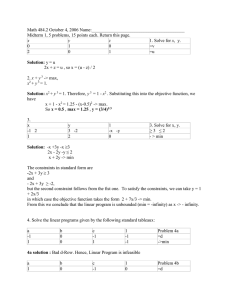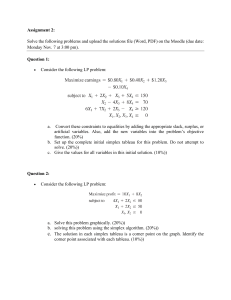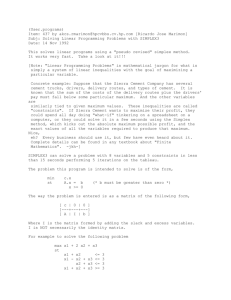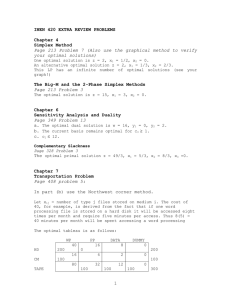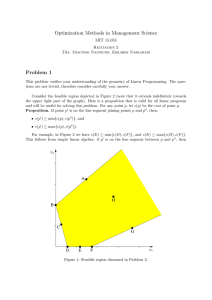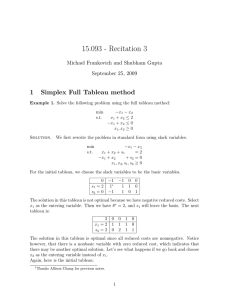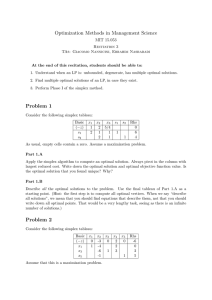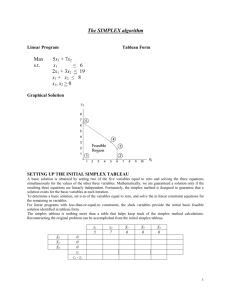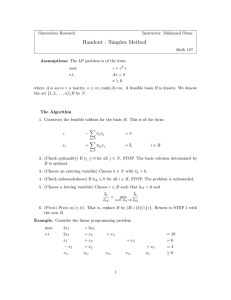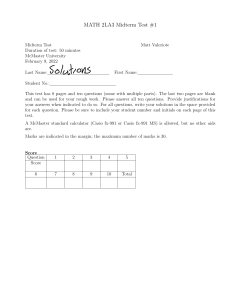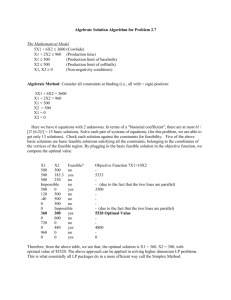Instructor: Assoc
advertisement
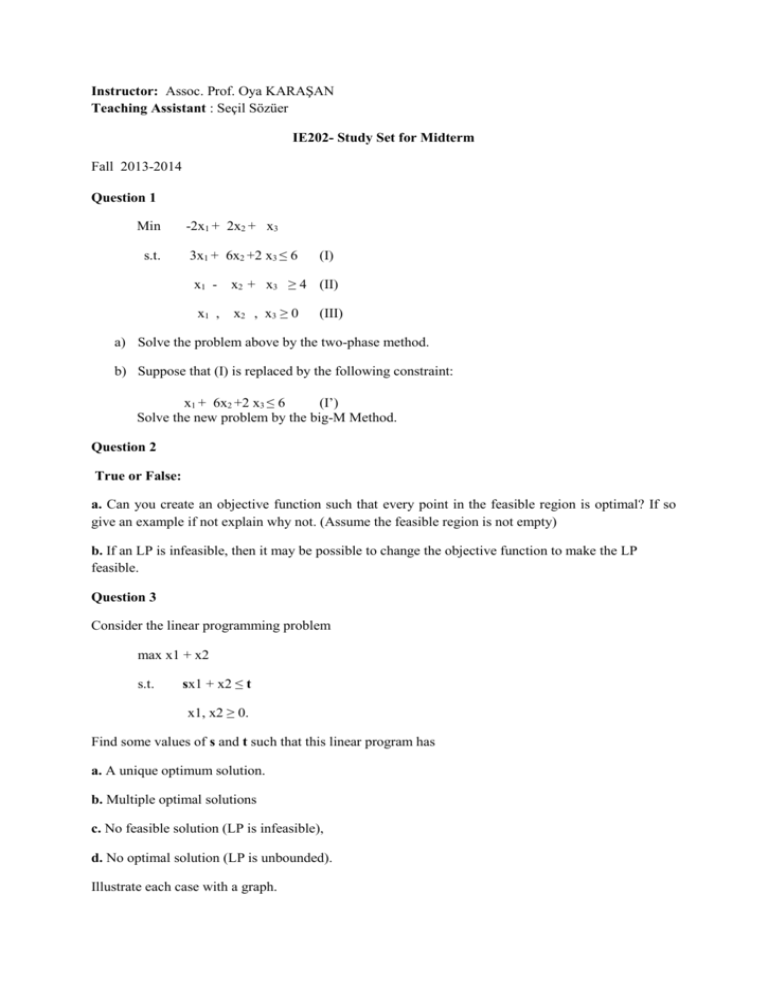
Instructor: Assoc. Prof. Oya KARAŞAN Teaching Assistant : Seçil Sözüer IE202- Study Set for Midterm Fall 2013-2014 Question 1 Min s.t. -2x1 + 2x2 + x3 3x1 + 6x2 +2 x3 ≤ 6 (I) x1 - x2 + x3 ≥ 4 (II) x1 , x2 , x3 ≥ 0 (III) a) Solve the problem above by the two-phase method. b) Suppose that (I) is replaced by the following constraint: x1 + 6x2 +2 x3 ≤ 6 (I’) Solve the new problem by the big-M Method. Question 2 True or False: a. Can you create an objective function such that every point in the feasible region is optimal? If so give an example if not explain why not. (Assume the feasible region is not empty) b. If an LP is infeasible, then it may be possible to change the objective function to make the LP feasible. Question 3 Consider the linear programming problem max x1 + x2 s.t. sx1 + x2 ≤ t x1, x2 ≥ 0. Find some values of s and t such that this linear program has a. A unique optimum solution. b. Multiple optimal solutions c. No feasible solution (LP is infeasible), d. No optimal solution (LP is unbounded). Illustrate each case with a graph. Question 4 Consider the following simplex tableau of a given maximization LP problem. Give general conditions on each of the unknowns A-E such that each of the following statements is true. Even if the statement holds independently of the values of a specific variable, you should still mention that that variable can take any value. So, for each part you should present 5 conditions, one for each unknown. a) The tableau is final and there exists a unique optimal solution. b) The tableau is final and there exist alternative optimal solutions. c) The simplex method determines an unbounded solution from this tableau. d) The current bfs is degenerate (not necessarily optimal). e) Find the column under variable x3 in the original constraint matrix. Assume x4, x5, and x6 are the slack variables. Question 5 Consider the following problem (a) Convert the problem into standard form and construct a basic feasible solution at which x1 = x2 = x3 =0 (b) Carry out the full tableau implementation of the simplex method, starting with the basic feasible solution you found in part (a). Question 6 Question 7 Question 8 Question 9
